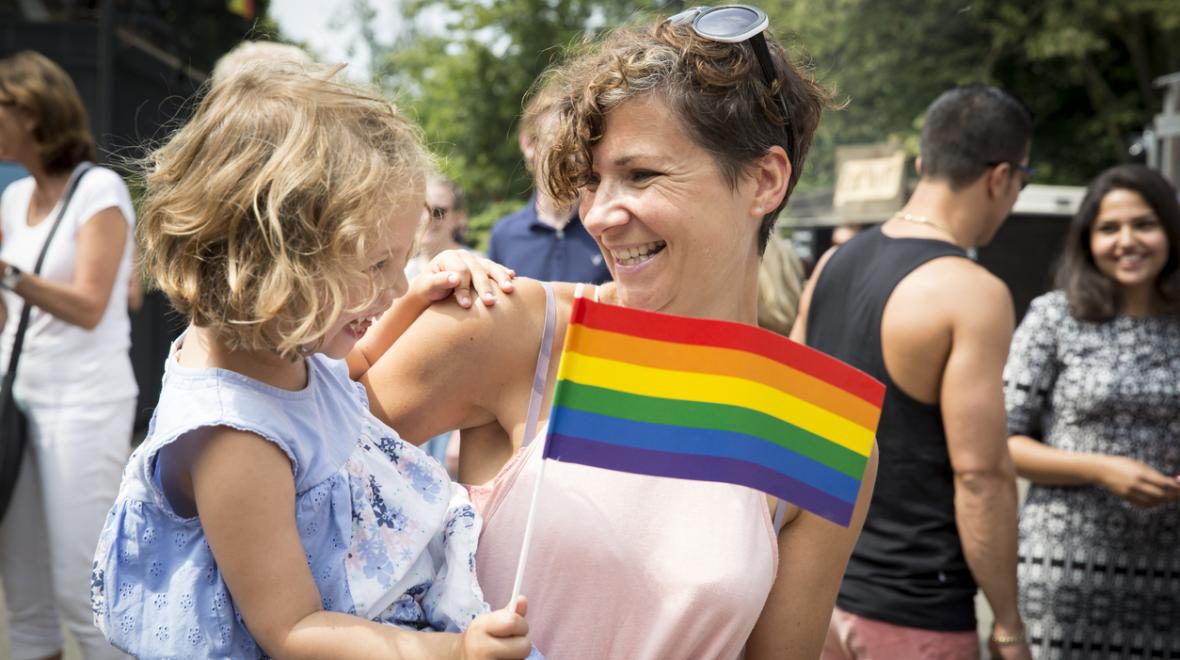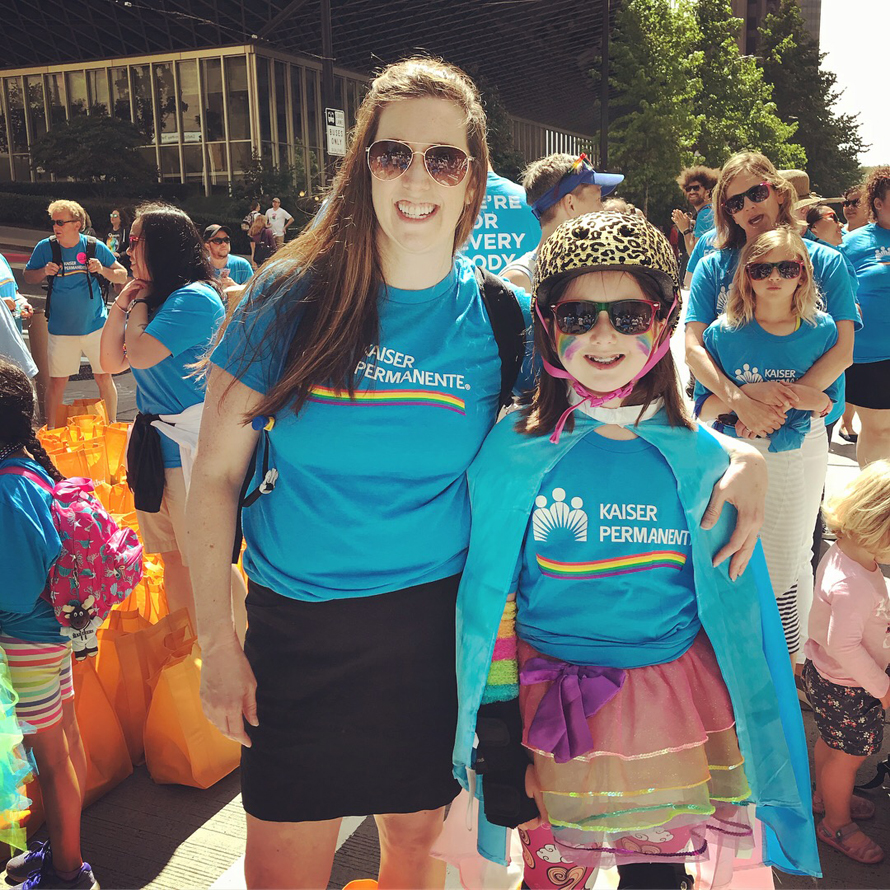
It’s June, and our family is focusing this month on teaching our kids about inclusivity and compassion. Why? Because it’s Pride Month, with lots of festivities filled with rainbows and glitter planned for Seattle PrideFest (June 24–25, 2023). We’ll also be using the month to find teachable moments when I’m able to explain to them the importance of diversity, equity and inclusion, and the many ways that people love one another.
As a heterosexual woman, I’ve been able to move through the world without having my sexuality or relationships questioned. I can go out in public and show affection to my husband without fear of discrimination or violence. I was able to marry him without question, criticism or laws preventing me from doing so. Regardless of my children’s sexuality and identities, I want them to understand what it means to be an ally of the LGBTQIA+ community by being supportive, listening and using my voice to stand up for what’s right. And I want them to be raised in an environment where diversity is accepted and respected, in hopes that they will grow up to be empathetic toward others and embrace the beauty of difference.
Pride events are joyous and inclusive celebrations, and the vast majority are family-friendly and community-oriented. With that said, the events can include sexually explicit content and partial nudity, which is not intended for children’s consumption, and the topics at hand can be challenging for them to understand. Even with challenging content (that can be addressed in constructive and educational ways), I feel it’s important for ally families to show up to these events with their children and focus on teachable moments all month long to support the LGBTQIA+ community, which continues to fight for equal rights for all human beings.

As a Pride events regular, I know what to expect and have been teaching my children about the importance of inclusivity. Here are some tips that may be helpful to parents who have had similar experiences or even newbies who are looking forward to attending events and talking about Pride with their kids:
The birds and the bees
As a first-time attendee at an event, I remember being more concerned than I had expected about my kids seeing some nudity and displays of sexuality that might surprise them. The best way to address this concern regarding an event is head-on, by talking to your kids beforehand about things they might see or words they might hear, and then letting them ask questions. Your level of honesty with them is up to your discretion. It’s important to know your child’s limits and maturity level while letting them enjoy Pride events.
Diversity 101
One of the best ways to be an ally and to raise young allies is to introduce them to the concept of diversity. I focused on expanding the definition of the word “family” early on in my children’s lives so that they understood that families come in all configurations and sizes. A favorite way to incorporate this is through play: We chose books and toys featuring diverse characters and reminded our children that families can come in all kinds of combinations. When they ask us questions about LGBTQIA+ families, we answer honestly and explain that what matters most is that parents love their children.
Rainbows and glitter for all
Part of the fun for kids is being involved in the excitement of Pride celebrations. Make clothing, stickers, Pride flags, beads and accessories available to your kids to help them feel included. Plus, who doesn’t like to adorn themselves with rainbows and glitter? As a parent, make sure you dress up and join in on the fun, too. This is an easy way to make the event feel even more inclusive and to provide a positive experience that kids will remember.
Watch your language
Our kids are always watching us, and whether we like it or not, they tend to follow our example. One way to lead by example as an ally during Pride month (and always!) is by eliminating discriminatory language and using inclusive language. Take some time to learn the appropriate terminology and use people’s preferred pronouns. It’s very important to never ever make jokes at the expense of the LGBTQIA+ community — that goes against everything else you’re working toward as an ally. So, watch your language!
Make it fun
You’ve talked to your kids about what to expect, everyone is all dressed up, and you’ve been talking to them about diversity and inclusion — awesome. Now it’s time to celebrate and make it fun!
Review the Pride schedule and determine which events might be fun and appropriate for your kids and make a day out of it! In addition to participating, I recommend making a kid-friendly Pride playlist to dance to, covering your house in rainbow decorations and choosing an LGBTQIA+ nonprofit to donate to as a family, taking the opportunity to explain to your kids about how that donation is going to positively impact others. The more fun your kids have throughout the day, the more memorable it’ll be!
I hope that parents will take the opportunity to talk to their children about diversity, inclusion and equal human rights, and about accepting and supporting those who may be different from themselves. Instilling a respect for families of all types and people of all orientations fosters greater appreciation for the individuality and value of the people around them and cultivates respect and allyship. Reinforcing values such as the diversity of love and the importance of mutual respect and understanding can help children feel more comfortable expressing themselves and being more tolerant of how others do the same.
Editor’s note: This article was originally published in June 2020 and has been updated for June 2023.











